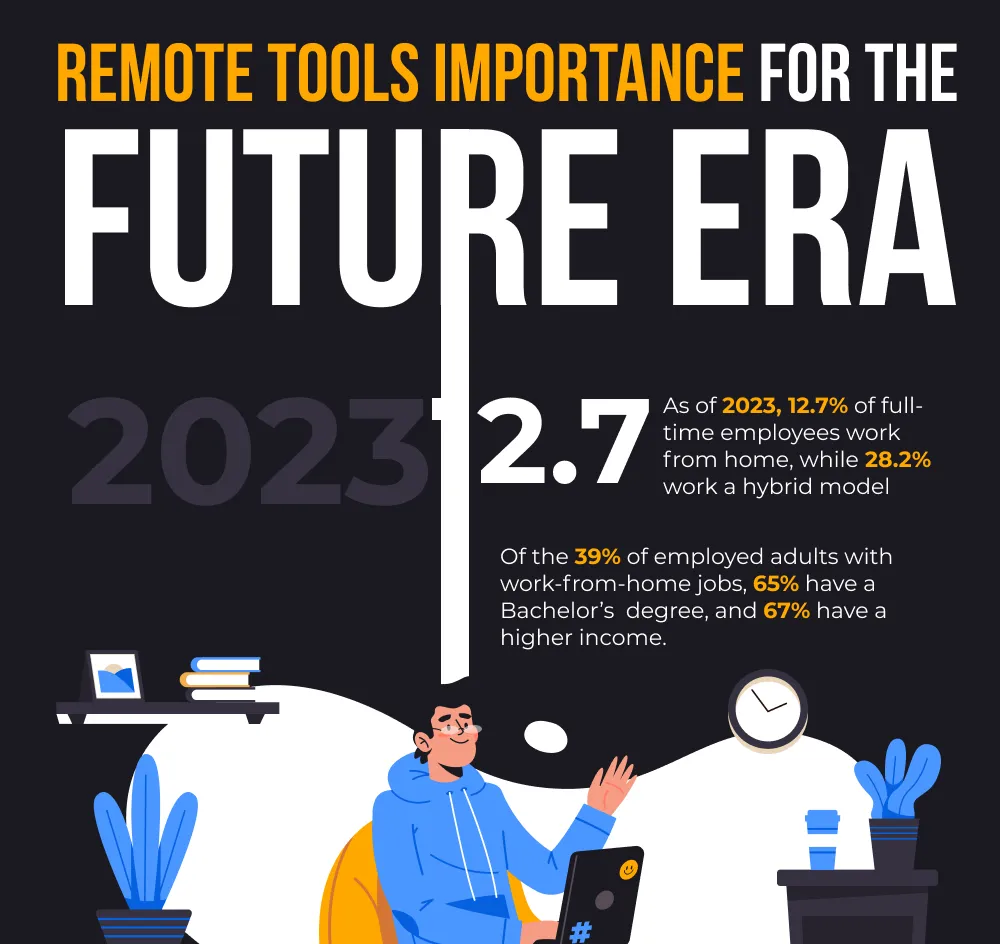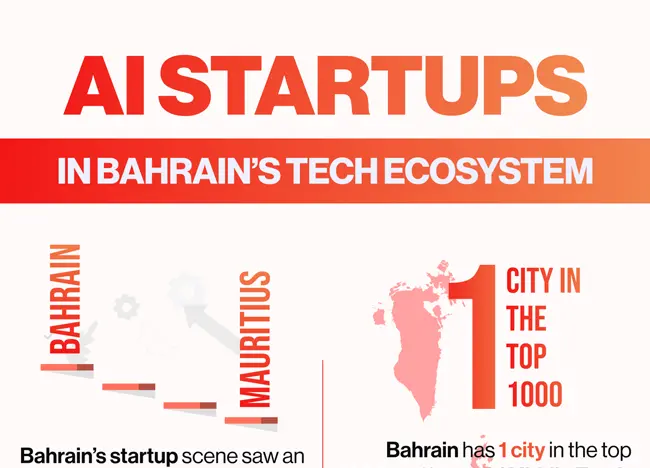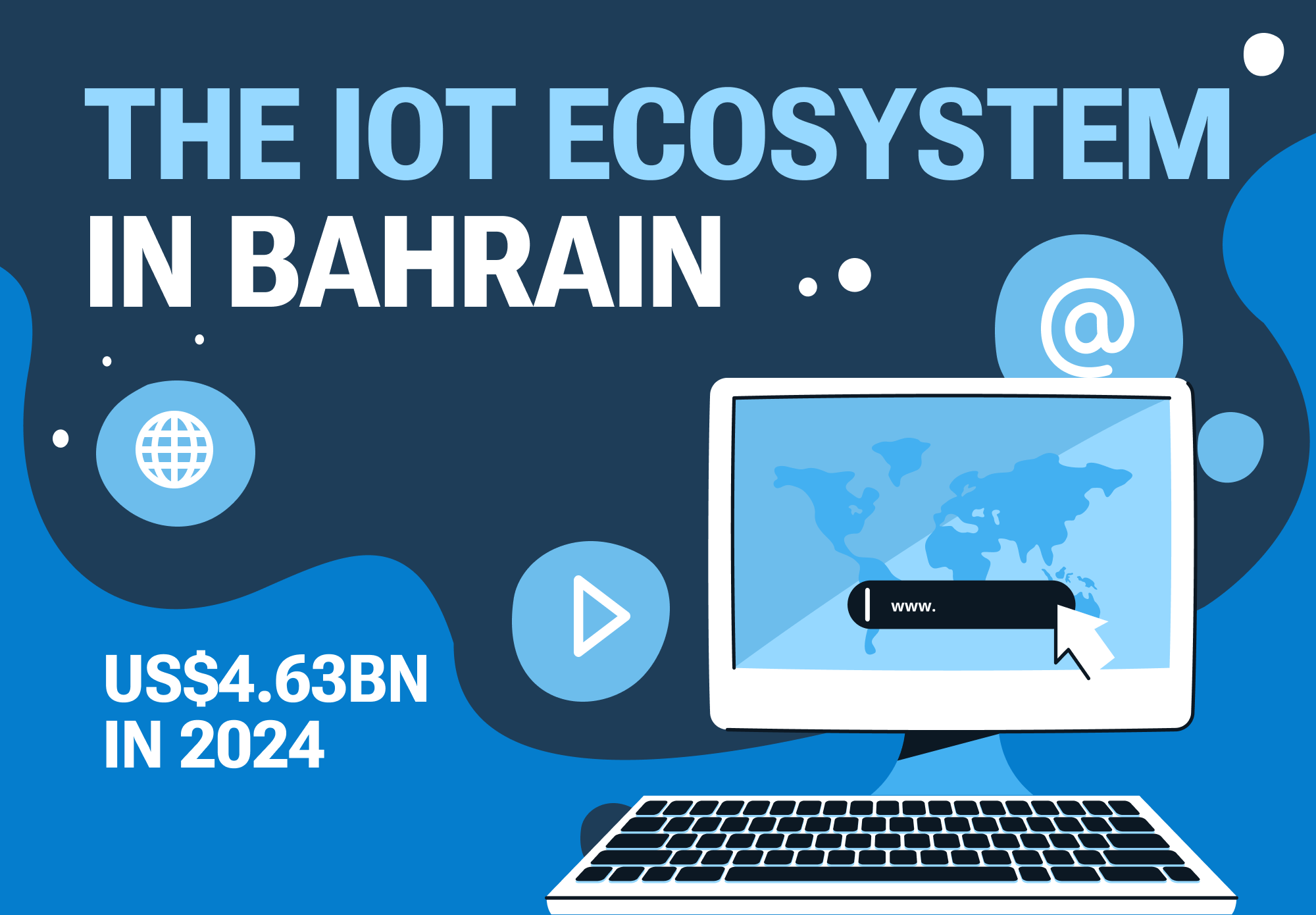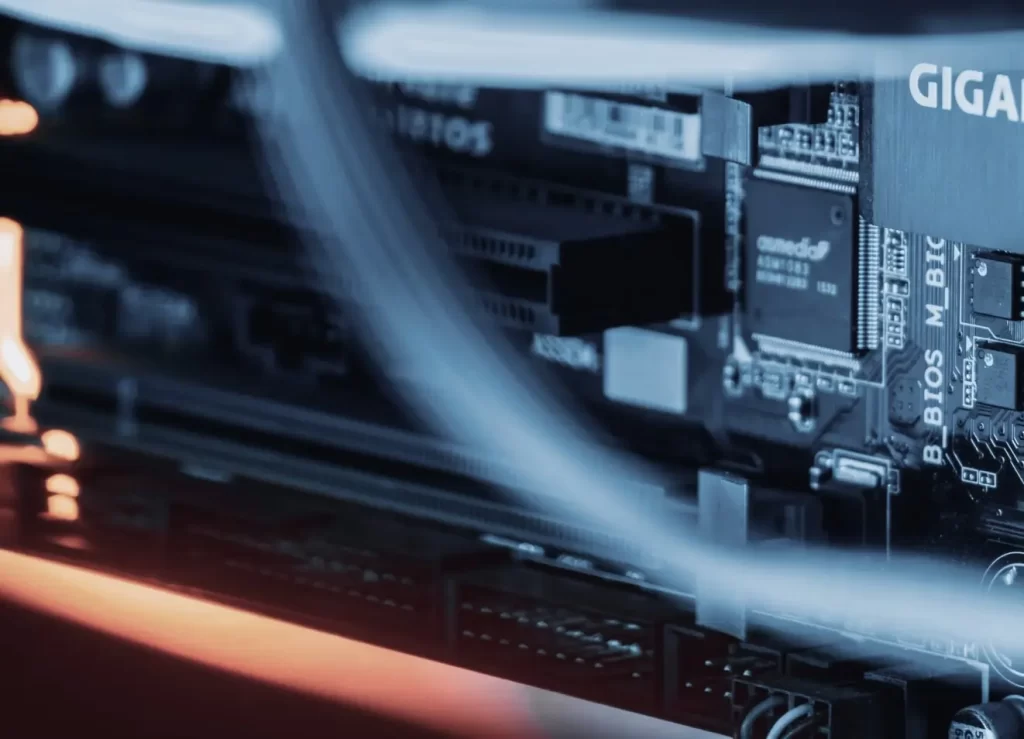MERN is one of the stacks that is being used in modern web development. MERN stands for MongoDB, Express.js, React.js, and Node.js. It is mainly used in developing web applications because it utilizes JavaScript at both the front and back ends of the application. So, it becomes pretty easy and faster. MERN Stack helps developers to produce dynamic, fast, and scalable applications.
MERN Stack is a technique of developing a website that consists of MongoDB, Express.js, React.js, and Node.js. This technique uses JavaScript for both the front end and the back end to build web applications. Let’s discuss what are the best advantages of using a MERN stack as well as the guidelines for successful development.
Contents
- 1 What is the MERN Stack?
- 2 Breaking Down the MERN Stack: Components & Roles
- 3 Key Advantages of Using the MERN Stack for Modern Projects
- 4 Best Practices for Ensuring Success in MERN Stack Projects
- 5 Common Pitfalls & How to Avoid Them
- 6 Trends & Opportunities in MERN Development
- 7 Unlocking Opportunities for MERN Stack Development Growing Tech Landscape
- 8 FAQs
What is the MERN Stack?
The MERN Stack is a popular JavaScript-based development framework that combines four powerful open-source technologies — MongoDB, Express.js, React.js, and Node.js. Together, they enable developers to build dynamic, full-stack web applications using a single programming language: JavaScript.
Each component in the MERN Stack plays a distinct role:
- MongoDB – A NoSQL database that stores data in flexible, JSON-like documents, making it easy to handle unstructured or semi-structured information.
- Express.js – A lightweight backend framework that simplifies server-side development and API creation.
- React.js – A powerful front-end library developed by Facebook for creating fast, interactive user interfaces using reusable components.
- Node.js – A server-side runtime environment that allows developers to execute JavaScript on the backend, enabling efficient, scalable applications.
By integrating these technologies, the MERN Stack streamlines the development process — from database to frontend — allowing teams to work seamlessly without switching languages or environments. It’s especially favored for building single-page applications (SPAs), real-time apps, and modern web platforms that require performance, scalability, and maintainability.
Why is it relevant in 2025?
As of 2025, the MERN Stack remains one of the most in-demand and future-proof solutions for full-stack development. The global shift toward JavaScript-based ecosystems, combined with the rise of remote development, microservices, and cloud-native apps, has solidified MERN’s position in the development landscape.
Here’s why it’s still highly relevant:
- Full JavaScript Ecosystem – Developers can build end-to-end applications without learning multiple languages, increasing productivity and reducing context switching.
- Community & Ecosystem Growth – MERN’s libraries, tools, and community resources have expanded dramatically, offering improved frameworks, templates, and best practices.
- Scalability & Performance – Node.js and MongoDB have evolved to handle larger workloads, while React’s latest features (like Server Components and concurrent rendering) enhance UI performance.
- Future-Proof Technology – With continuous support from Meta (React), the OpenJS Foundation (Node.js), and MongoDB Inc., MERN remains an adaptable stack for emerging technologies like AI integrations, IoT apps, and serverless architectures.
- Talent Availability – A huge global developer base ensures easier hiring, faster onboarding, and better long-term project sustainability.
In short, the MERN Stack in 2025 represents a mature, efficient, and scalable solution for modern businesses looking to develop fast, secure, and engaging web experiences.
Also Learn About: Server-Side Rendering vs. Client-Side Rendering: Which is Better for Your Website?
Breaking Down the MERN Stack: Components & Roles
The MERN Stack is composed of four core technologies — MongoDB, Express.js, React.js, and Node.js — that work together to deliver a smooth, full-stack JavaScript development experience. Each component serves a specific purpose, yet integrates seamlessly to create high-performing, data-driven web applications.
Let’s explore how each layer contributes to the overall MERN architecture:
1. MongoDB – The NoSQL Database Layer
At the foundation of the MERN Stack is MongoDB, a document-oriented NoSQL database designed for flexibility and scalability. Instead of rigid tables and rows, MongoDB stores data as JSON-like documents that naturally align with JavaScript objects, making data handling intuitive for developers.
Key strengths:
- Schema-less design for agile development
- Easy horizontal scaling and cloud deployment
- Excellent performance for unstructured or rapidly changing data
- Strong ecosystem support (Atlas, Compass, aggregation framework)
MongoDB’s dynamic schema structure allows developers to iterate quickly — ideal for startups and enterprise teams building modern web platforms.
2. Express.js – The Backend Framework
Express.js acts as the backend framework that powers the application’s server-side logic and routing. It runs on top of Node.js, simplifying complex HTTP operations and enabling developers to build APIs and web servers with minimal setup.
Why developers love Express.js:
- Minimalist design with high flexibility
- Middleware support for authentication, validation, and error handling
- Simplified API creation and routing
- Seamless integration with MongoDB through Mongoose ORM
By leveraging Express.js, the MERN Stack provides a lightweight and powerful backend that connects your frontend and database efficiently.
3. React.js – The Frontend Library
React.js, developed and maintained by Meta (Facebook), forms the frontend layer of the MERN Stack. It enables developers to build interactive, responsive, and modular user interfaces through a component-based architecture.
Core advantages:
- Fast rendering using the Virtual DOM
- Reusable UI components for maintainable code
- Unidirectional data flow for predictable app behavior
- Large ecosystem of tools (Next.js, Redux, Vite, etc.)
React helps developers create a smooth, app-like user experience — making it one of the main reasons the MERN Stack is favored for single-page applications (SPAs) and high-performance web projects.
4. Node.js – The Runtime Environment
Node.js serves as the runtime engine for executing JavaScript code outside the browser. Built on Google Chrome’s V8 engine, Node.js brings event-driven, non-blocking I/O to server-side development — ensuring excellent speed and scalability.
Key benefits:
- Handles thousands of concurrent requests efficiently
- Enables real-time functionality (e.g., chat apps, dashboards)
- Vast NPM ecosystem for rapid development
- Works perfectly with Express.js for RESTful APIs and microservices
Together, Node.js and Express.js form the robust backend of the MERN Stack, while React manages the dynamic frontend and MongoDB handles scalable data storage.
How These Components Work Together
In a typical MERN Stack application:
- React.js renders the user interface and sends requests to the backend.
- Express.js (running on Node.js) processes those requests, interacting with MongoDB to read or write data.
- The backend then returns a response to the frontend, updating the UI dynamically — all powered by JavaScript from end to end.
This unified architecture minimizes complexity, reduces development time, and enhances overall performance — making the MERN Stack a top choice for full-stack development in 2025 and beyond.
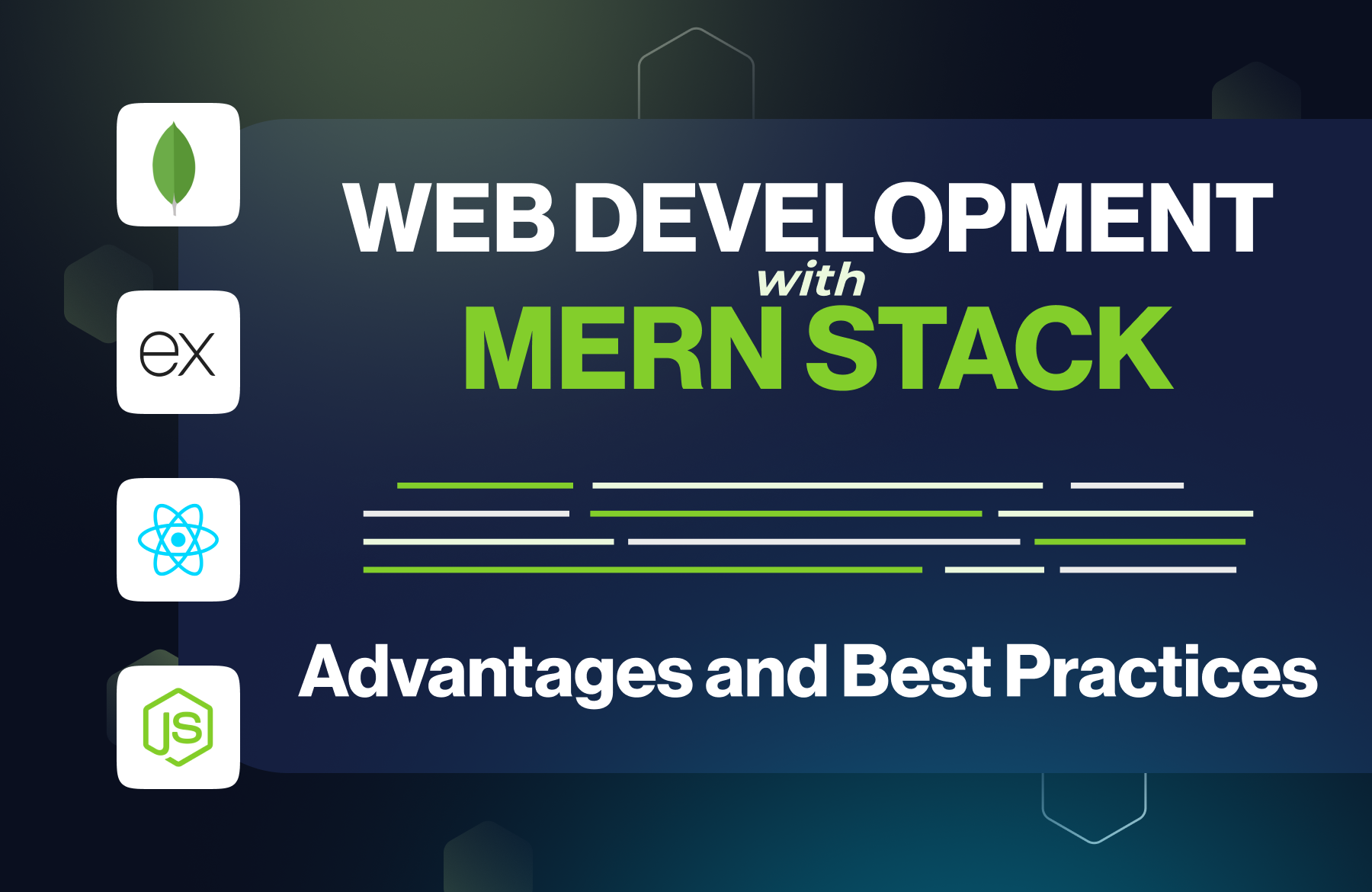
Key Advantages of Using the MERN Stack for Modern Projects
- A Unified JavaScript Environment for Consistent Development: The MERN stack uses JavaScript for both the front and back parts of the website. This means developers only need to learn one language, making it faster to build websites. It also helps teams work better because everyone is using the same language.
- A Large Open Source Ecosystem with Strong Community Support: The MERN stack is completely free and open source. Therefore, developers worldwide contribute towards making it better. This eventually provides numerous tools and resources to its users. When you encounter a problem, you can request other developers for help and try to make improvements to your app.
- Scalability and Flexibility to Meet Business Needs: MERN is easy to scale, which is very good for big businesses in which many use their applications. MongoDB allows a database change to occur without too many changes involved. Node.js helps the server stay fast and work well, even with lots of people using it.
- Improved Productivity with Reusable Components in React.js: React.js helps developers by letting them make parts of the code that can be used in many places. These parts are easier to fix and update, which makes building websites faster and helps add new features.
- Optimized Performance Across the Stack: The MERN stack is fast and works well. Node.js helps the server run smoothly, React.js makes the front end fast, and MongoDB helps get data quickly. Together, these tools help developers build websites that are quick and strong.
Best Practices for Ensuring Success in MERN Stack Projects
- Plan Your Application Architecture Before You Start: Good planning is key to building a strong application. Before writing any code, decide how your application will be structured. This includes setting up data models, designing APIs, and organizing the overall system. A clear plan helps prevent future problems and keeps the project on track.
- Write Clean, Organized, and Scalable Code: Well-organized code makes it easier to read and update. Break your application into smaller modules so developers can understand and fix issues quickly. A clear file structure also helps manage complex projects efficiently.
- Use Strong Security Measures: Security should always be the priority. Sanitize user input to protect your application, use secure authentication methods like JWT, and keep software updated. It prevents common attacks, such as SQL injection, cross-site scripting, and much more.
- Optimize MongoDB Queries for Better Performance: Databases play a big role in application speed. Improve performance by indexing important fields, avoiding unnecessary data fetching, and structuring queries properly. These steps reduce execution time and make your application faster.
- Test Your Application at Every Stage: Testing ensures that your application works correctly. Unit tests, integration tests, and end-to-end tests are some of the testing methods used to find problems early. Tools like Jest and Mocha can automate testing, saving much time and effort.
- Monitor Performance and Fix Issues Quickly: Use performance monitoring tools to track your application’s speed and efficiency. Focus on database queries, server performance, and front-end rendering to keep the user experience smooth. Address bottlenecks before they become major issues.
Common Pitfalls & How to Avoid Them
While the MERN Stack offers speed, scalability, and flexibility, even experienced developers can face common challenges during implementation. Understanding these pitfalls — and learning how to prevent them — helps ensure your application remains stable, efficient, and maintainable over time.
Let’s look at the most frequent mistakes and how to avoid them.
1. Over-Engineering the Stack
The issue: Developers sometimes add unnecessary layers, libraries, or abstractions in an attempt to make the app “future-proof.” Over-engineering increases complexity, slows development, and makes maintenance harder.
How to avoid it:
- Keep architecture simple — start with clear goals and add complexity only when it’s truly needed.
- Follow YAGNI (You Aren’t Gonna Need It) principles.
- Use lightweight tools and modular design so you can scale features naturally as your project grows.
- Prioritize readability and maintainability over premature optimization.
2. Ignoring Frontend Performance (React)
The issue: A common mistake in MERN projects is focusing too much on backend logic while neglecting frontend performance. Heavy components, poor state handling, and inefficient rendering can lead to slow load times and poor user experience.
How to avoid it:
- Use React’s built-in optimization tools — like
React.memolazy loading and the concurrent rendering features in React 18+. - Keep component hierarchies lean and avoid unnecessary re-renders.
- Use code-splitting and tree-shaking to minimize bundle size.
- Test and monitor performance with Lighthouse or React Profiler.
3. Database Design Mistakes in MongoDB
The issue: MongoDB’s flexible schema can tempt developers to skip proper planning. Poorly designed document structures or missing indexes can cause severe performance issues and data inconsistency later.
How to avoid it:
- Spend time designing a logical document schema that fits your application’s data relationships.
- Use indexes for frequently queried fields.
- Avoid deeply nested documents unless necessary.
- Consider data aggregation and sharding early if scalability is a goal.
- Use Mongoose models and validation to enforce data consistency.
4. Security Misconfigurations
The issue: Security is often an afterthought in full-stack development, especially when teams are focused on functionality. Misconfigurations can lead to data leaks, cross-site scripting (XSS), or injection vulnerabilities.
How to avoid it:
- Always sanitize and validate user input on both the frontend and backend.
- Use Helmet.js for securing Express.js HTTP headers.
- Implement JWT (JSON Web Token) authentication securely and store tokens in HTTP-only cookies.
- Keep environment variables and secrets out of public repositories (use
.envfiles). - Regularly update dependencies and monitor vulnerabilities using npm audit.
5. Poor State Management & Component Architecture
The issue: As React applications grow, poor state management becomes one of the biggest sources of bugs and inefficiency. Scattered logic, unstructured components, and over-reliance on props can make code difficult to maintain.
How to avoid it:
- Plan your state management strategy early (Context API, Redux Toolkit, Zustand, or Recoil).
- Keep local component state minimal and isolate reusable logic with custom hooks.
- Maintain a clear folder and component structure — separate UI, logic, and data layers.
- Use TypeScript (optional but recommended) for stronger type safety and fewer runtime errors.
What's New With: Data Driven SEO Magic: Turn Analytics into Rankings
Trends & Opportunities in MERN Development
The MERN Stack continues to evolve rapidly as the development ecosystem embraces new tools, frameworks, and deployment models. In 2025, MERN is not just a technology stack — it’s a foundation for modern, scalable, and innovative web applications.
Let’s explore the emerging trends and opportunities shaping the future of MERN Stack development.
1. The Shift Toward Full-Stack JavaScript Teams
One of the most significant trends in recent years is the rise of full-stack JavaScript teams. Organizations are moving away from siloed frontend and backend departments, opting instead for integrated teams that can deliver end-to-end solutions using the same language — JavaScript.
Why it matters:
- Unified skill sets mean faster collaboration and fewer communication gaps between frontend and backend developers.
- Development becomes more agile and cost-efficient, as one team can handle both sides of the application.
- The widespread adoption of TypeScript and improved DevOps tooling for Node.js makes full-stack JavaScript more robust and enterprise-ready than ever.
This shift positions the MERN Stack as the go-to solution for organizations seeking flexibility, productivity, and rapid innovation.
2. Growth in Real-Time Applications (Socket.io, WebSockets)
Modern users expect instant feedback — whether it’s live chat, stock updates, multiplayer gaming, or collaborative editing. As a result, real-time functionality is now a critical part of many web applications.
The MERN Stack excels in this area thanks to Node.js’s event-driven architecture and its seamless integration with WebSocket technologies such as Socket.io.
Opportunities in real-time MERN apps:
- Live dashboards and analytics for logistics, fintech, and IoT.
- Chat and collaboration tools for SaaS and enterprise software.
- Interactive streaming platforms with real-time user engagement.
- eCommerce notifications and dynamic order tracking systems.
With Node.js and React working together, developers can create real-time, scalable applications that deliver superior user experiences.
3. JAMstack & Serverless Usage with MERN
The growing adoption of JAMstack (JavaScript, APIs, Markup) and serverless architectures has opened new possibilities for the MERN ecosystem. Developers increasingly combine MERN with serverless platforms like AWS Lambda, Vercel, and Netlify to enhance performance and reduce infrastructure overhead.
Key advantages:
- Faster deployments and simplified scaling through serverless backends.
- Reduced costs — pay only for what you use.
- Improved performance via CDN-delivered static assets and edge computing.
- Hybrid architectures — React on the frontend, Node.js APIs deployed serverlessly, and MongoDB Atlas for managed cloud databases.
This approach empowers teams to build lightweight, high-performance MERN apps that scale automatically and deploy globally with minimal configuration.
4. Industry Adoption: eCommerce, SaaS, Fintech & Beyond
The MERN Stack has matured into a proven technology choice across multiple industries. Its flexibility and scalability make it ideal for both startups and enterprises.
Where MERN is making an impact:
- eCommerce: Dynamic product catalogs, personalized recommendations, and seamless cart experiences built with React and Node.js APIs.
- SaaS Platforms: Fast-loading, modular dashboards with real-time data updates.
- Fintech: Secure, real-time transaction tracking and analytics dashboards leveraging MongoDB’s speed and reliability.
- EdTech & HealthTech: Data-rich platforms that rely on responsive interfaces and scalable backend infrastructures.
With the continued growth of digital transformation, companies are seeking developer efficiency, scalability, and rapid time-to-market — all of which align perfectly with the MERN Stack’s capabilities.
Unlocking Opportunities for MERN Stack Development Growing Tech Landscape
Dubai has emerged as a tech hub, and businesses are adopting digital transformation. Companies in this region can make use of the MERN stack to develop scalable and high-performance applications. The flexibility of the MERN stack ranges from eCommerce platforms to enterprise solutions, perfectly fitting into the innovative economy of Dubai. Partnering with a web development company in Abu Dhabi can further enhance the success of digital projects by ensuring expertise and technical excellence.
Statistical Insights into MERN Stack Adoption and Performance
| Statistic | Value |
| Average development time saved | 30% |
| Popularity among developers | 68%(2024 survey) |
| MongoDB’s data processing speed | Up to 100x faster than relational DBs |
| React.js usage for web UIs | 70% of top websites |
| Node.js performance improvement | 50% reduced latency |
| Global MERN stack adoption growth | 25% annual increase |
| MongoDB scalability satisfaction | 85% (2024 user feedback) |
| React.js developer productivity boost | 40% faster front-end development |
How to Scale My eCommerce Business Efficiently Using the MERN Stack
Growing an eCommerce business needs strong technology to manage increasing traffic and transactions. The MERN stack, with its ability to scale, is a great choice. For customized support, work with an eCommerce website development company in Dubai to help your platform expand smoothly while staying fast and efficient.
FAQs
Q: What is the MERN Stack, and why is it called MERN?
A: MERN stands for MongoDB, Express.js, React.js, and Node.js. It’s called MERN because those are the four technologies used from database to user interface, all using JavaScript.
Q: Is MERN better than MEAN (MongoDB, Express.js, Angular, Node.js)?
A: It depends on project requirements. While MEAN uses Angular for the front-end, MERN uses React, which many developers prefer for its component-based architecture and flexibility. Consider team skill-set, project complexity, and UI requirements.
Q: For what types of applications is the MERN Stack most suitable?
A: MERN works well for dynamic single-page applications (SPAs), real-time apps, scalable web platforms, startups, eCommerce sites, and when you want full-stack JavaScript. It may be less optimal for CPU-intensive tasks, legacy systems, or when a relational database is strictly required.
Q: What are the major challenges when working with MERN?
A: Some common challenges include: choosing the correct folder and component architecture; managing state and side-effects in React; designing a scalable NoSQL schema in MongoDB; handling production-level security; and deploying/monitoring full-stack JS apps.
Q: How should I choose between relational and NoSQL (MongoDB) when using MERN?
A: Consider your data relationships, join-heavy queries, transaction requirements, consistency needs, and scalability demands. While MongoDB (NoSQL) provides flexibility, ease of scaling, and JSON-native structure, for complex joins and strict ACID transactions, a relational database may be preferable.
Q: Is MERN suitable for large-scale enterprise applications?
A: Yes — when used with proper architecture, decoupling, microservices, caching, load-balancing, and monitoring, MERN can scale for enterprise usage. However, you’ll need to implement advanced best practices (e.g., modular services, proper database sharding, efficient front-end optimisation).
Final Words: Unlock the Full Potential of MERN Stack Development
The MERN stack—MongoDB, Express.js, React, and Node.js—offers a reliable, efficient way to build fast and scalable applications. Its modern design adapts to changing needs, while best practices like clear coding, performance optimization, and strong security ensure dependable results. Backed by extensive resources and community support, the MERN stack empowers businesses to achieve their digital goals and long-term success.

